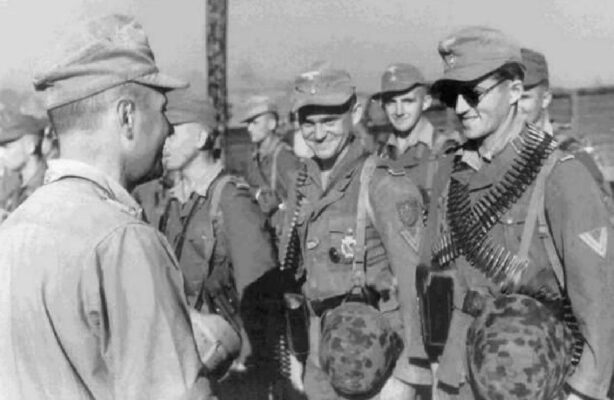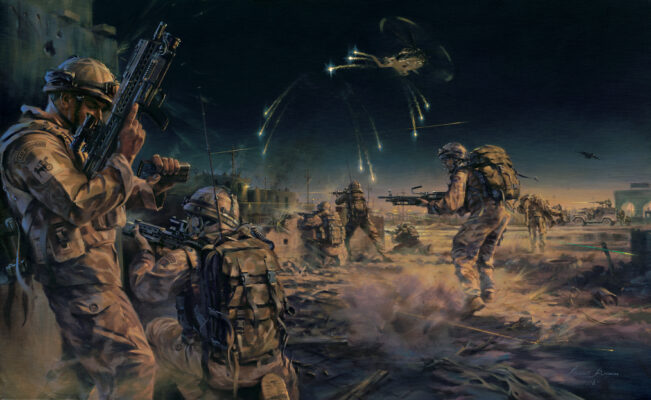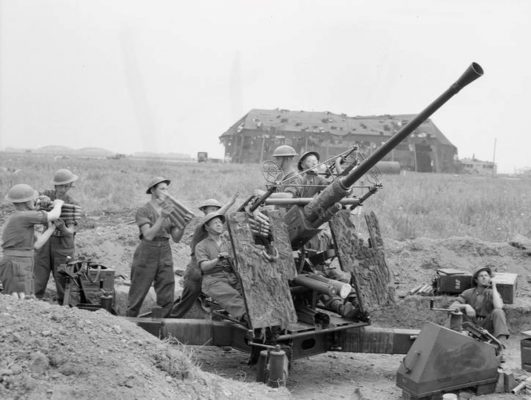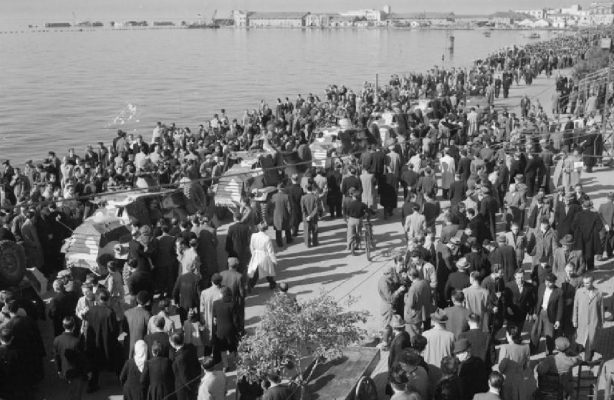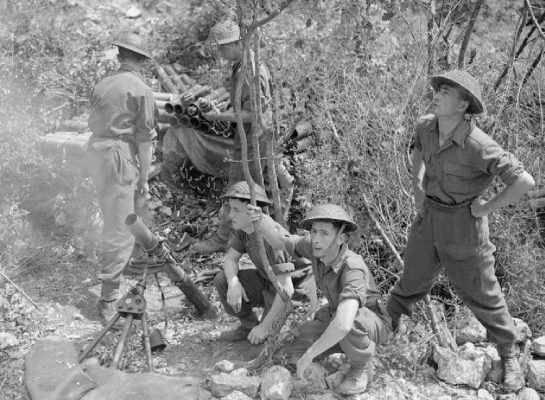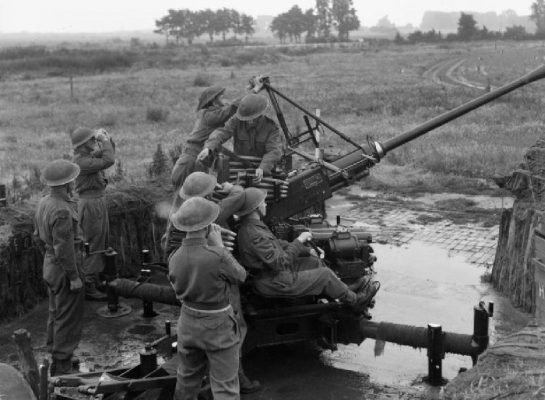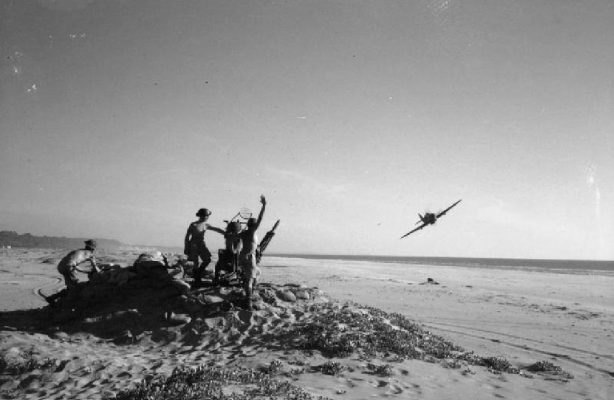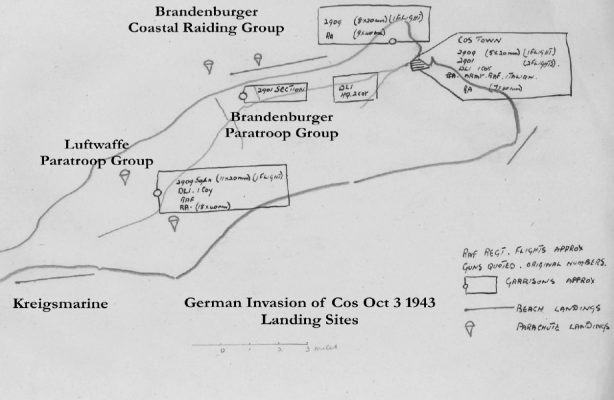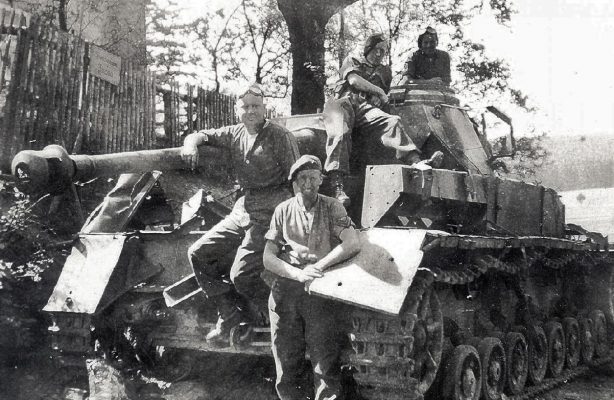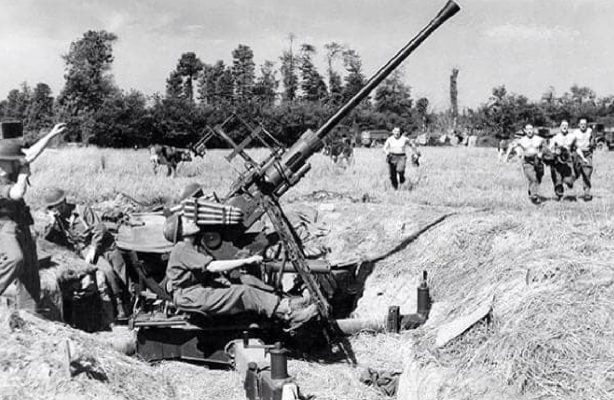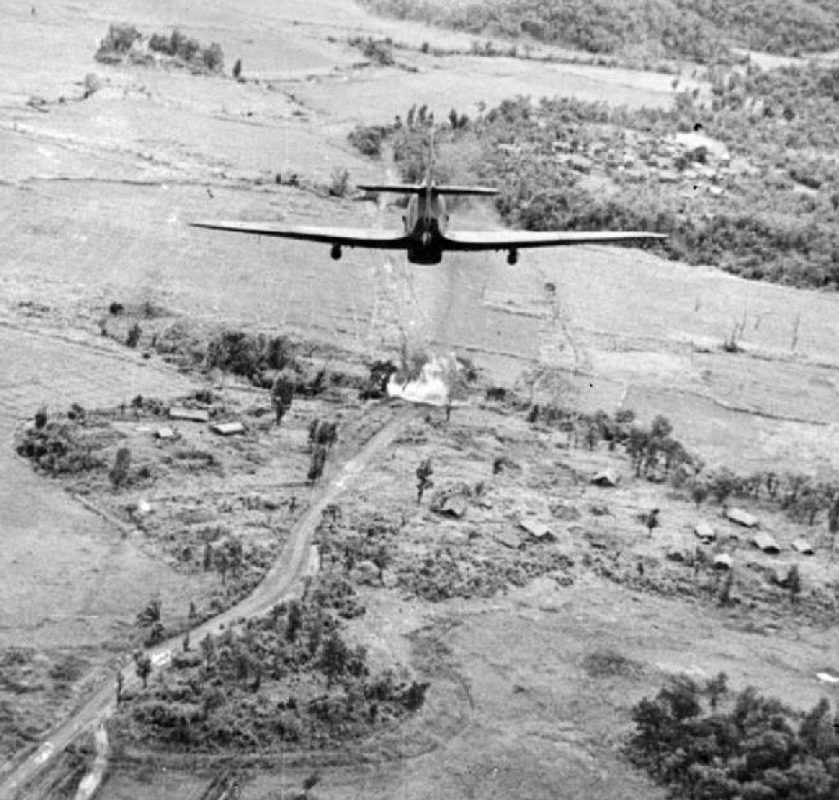
At the end of March 1944, No 2944 Field Squadron of the RAF Regiment was stationed near Maungdaw on the Arakan Front giving protection to AMES (Air Ministry Experimental Stations).
These were mobile short range Radar Units giving early warning of approaching enemy aircraft to forward ground forces, they were normally positioned between forward Infantry and heavy Artillery. However, even they are now coming to terms with the prospect of defeat here. The Germans have been quiet for the last few days but have returned with a vengeance today.
At the end of March 1944, No 2944 Field Squadron of the RAF Regiment was stationed near Maungdaw on the Arakan Front giving protection to AMES (Air Ministry Experimental Stations), these were mobile short range Radar Units giving early warning of approaching enemy aircraft to forward ground forces, they were normally positioned between forward Infantry and heavy Artillery.
EYEWITNESS
In the first few days of April 1944, we heard that Imphal had been besieged by the Japanese and we received orders to prepare to move there after stand to in the morning, each man had a personal allowance of 20lbs in personal kit. At 04:30 we were relieved by another Regiment squadron and taken by road to Dozhari, an airfield on the road back to Chittagong. There we were packed into Dakota DC3 aircraft operated by the USAAF which had been diverted from The Calcutta – China hump run. After a flight that lasted of some 1 ½ hours – the last part of the jungle-clad hills held by the Japanese – we landed at Palel in the Imphal valley, as we alighted the aircraft our place was taken by non-combatants, it was a case of if you cannot fire a weapon get out. The food available was needed for others. We were given a packet of American k rations about the size of a present day carton of 200 cigarettes, this was classed as an emergency meal for one man and we were told not to eat it all at once as they didn’t know where our next meal was coming from. In fact that’s all we did receive for over 24 hours.
An Army officer directed us up to to some small hills about 1,200 ft above sea level, these being the foothills of a much higher range. After being given the password we were told to dig in and get below ground, no easy task this in rock and shale. On the heights above were strung out units of 20th Indian Division, during the night our artillery kept dropping shells in the saddles between the peaks to prevent the Japanese breaking through, the ground shook and we thought that we were going to be buried alive, that’s when the order was ‘shoot to kill anything that moves’.
Later in the Imphal campaign this was changed to use hand grenades as muzzle flash from weapons giving the defensive positions away. This was our first night in the siege of Imphal, we had very little sleep in between stag duties and even less of a breakfast as we nibbled at the remains of our k rations. After all the hard work spent preparing dug-outs we were moved out the next morning and taken by road about ½ hours journey to the main all weather airfield. I was the squadron Armourer and HQ was a Basha built into a hillside, next door was the Imphal Chindits HQ of General Orde Wingate. Outside there was an Indian Muleteer with 4 mules, I never did know how I got the job but was put in charge of supplies. It might have been the fact that I was brought up with horses and my mate to be – Bert Robson – who hails from Carlisle was a slaughter man in civilian life. What was to follow was a hair-raising experience and we became quite likely the only muleteers to serve in the RAF Regiment.
Every part of Imphal was split up into independent Box Defences. These were all named after fish i.e. Salmon, Trout, Perch, Sardine etc. They ran out when they got to us, Kipper. The outer defences of this box were a range of high hills, the radio post D for Donald was at 5,038 ft above sea level. This afterwards got the nickname ‘Nightmare Peak’, from the valley floor it was like looking at a wall, you had to put your head right back to see the tops and on these heights our Squadron had to dig in and fortify the area and we muleteers had to supply all their needs.
The climatic conditions could not have been worse. It was the pre-monsoon period very hot with even worse a high humidity, it was like having a shower to stand as the perspiration rolled off, and the relief to have the odd thunderstorm, although it made our job in hand more difficult in what was already a dangerous and hazardous operation. Both man and mule worked under these appalling conditions from dawn to dusk and two round trips was the order of the day, sometimes in heavy rain it was a major operation to do one round trip and priority you would not believe it, was drinking water carried in 2 gallon petrol tins which had been pressed into use each mule loaded with ten tins.
I well remember one such journey we arrived back at HQs soaked to the skin and covered in mud and together with the mules must have looked a very sorry sight. Our Commanding Officer Sqn Ldr Arnold, a big powerfully-built Australian, told us to get rid of the mules and stay in HQ’s Basha for the night, this was something because everybody at night had to go underground and take a turn at manning the inner defences. When we first took over the outer defences they were held by Indian troops l of C men who lacked the training necessary to the task allocated to them and their relief broke all records to reach the valley floor. Their shallow dugouts were made in to strong bunker positions, Corrugated iron sheets stripped from a deserted camp near the airstrip was used on the tops of these, take a single sheet up between two men was a feat in itself and amazing what one can do when survival is the name of the game.
From these heights you got a panoramic view of the heights surrounding Imphal and aircraft movements on the airfield looked like toys, when it is blotted out by low cloud the Dakota’s and C47’s transport aircraft circled round and dropped their loads by parachute through the low cloud on to the valley floor.
Food in the first part of the siege was so called half rations i.e. hard biscuits and jam for breakfast and tea, dinner was again biscuits and a small tin of bully beef between four men, this was poured out and never cut, a Dixie of tea each meal always without sugar and sometimes milk, the ration of cigarettes was 50 a week V’s made in India and often mouldy. Before stand-to at night a tot of rum was issued to all ranks so it wasn’t only the Royal Navy that received this. So it was a big improvement when along came Australian dehydrated potatoes and mutton. The cooks special for this was his stew and must say not very appetising still less after seeing his perspiration dripping of his face into it. Speaking of the biscuits it was amusing to watch a mule deal with one it’s nose pointed to the heavens as it turned it round in its mouth, I can only guess it was deciding what on earth it had got hold of. One thing they were that hard they were made to last. Our first allocation of bread was 20 loaves and our CO looked at them in amazement and I am sure he thought that we had stolen them.
To say more about the mules we collected them at daylight after stand-to from the mule lines always two sometimes it was four, they were a very much maligned animal, in fact we found them intelligent and sure footed, traversing difficult parts on route to the heights they liked a free head and did not object to you hanging on to their tails, if you overloaded them or put an uneven load on they stood rock solid with their ears up like goal posts and the message that they gave was ‘get that lot off’. The Army officer in charge of the mules always gave us the same piece – ‘bring them back, we can replace you but not them’.
During the siege of Imphal we collected drinking water from a treatment plant on the Manipur River, one morning we were held back under the cover of some trees waiting to go forward, normally it was straight in and straight out, this morning when we eventually got our load we were stopped by an Army NCO who remarked ‘Don’t tell your people but we have been fishing Jap bodies out of here this morning’ – we were both parched dry but dare not touch it. When we arrived at base HQ’s before going to the heights we found that the cook had used the water he had in stock salted for the daily dose of one pint per man and it was this that we drank, regarding the rest the CO gave the order to boil the lot and at the same time to keep the smoke signals down, some job that with damp wood.
LAC Henry Kirk, 2944 Sqn RAF Regiment.

